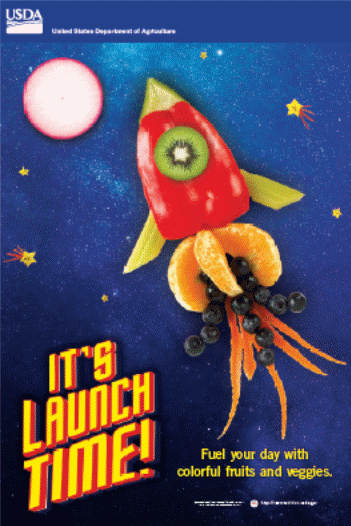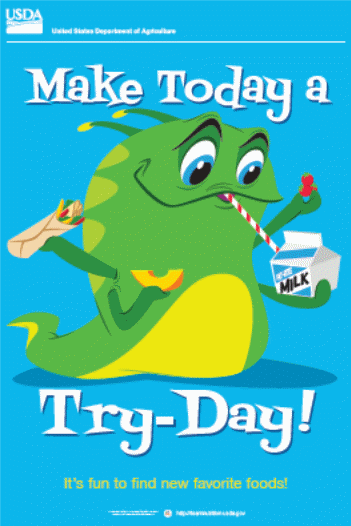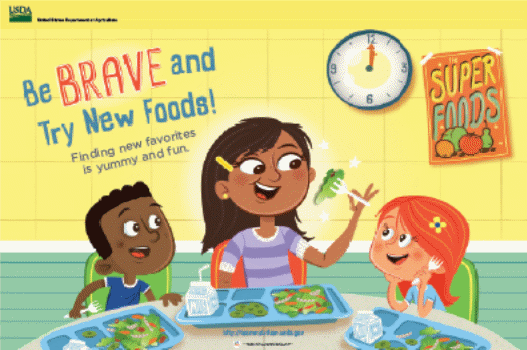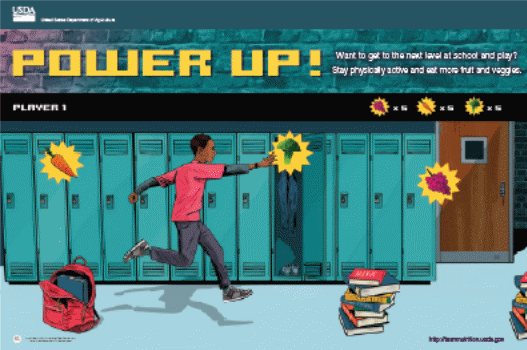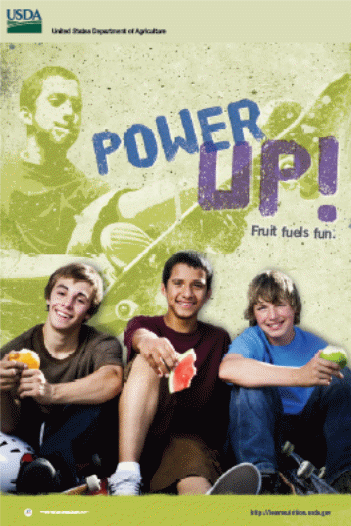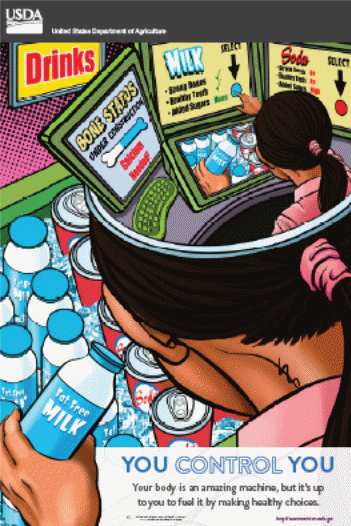Memorandum Request Approval to Perform Research for Team Nutrition Posters for Elementary and Middle School (Phase 2)
09 19 13 Memorandum Request Approval to Perform Research for Team Nutrition Posters for Elementary and Middle School (Phase 2).docx
Generic Clearance to Conduct Formative Research
Memorandum Request Approval to Perform Research for Team Nutrition Posters for Elementary and Middle School (Phase 2)
OMB: 0584-0524
Memorandum
Date: September 16, 2013
To: Julie Wise, OMB Desk Officer, Food and Nutrition Service
Through: Jameela D. Turay, Food and Nutrition Service, Information Collection Clearance Officer, Planning & Regulatory Affairs; Ruth Brown, United States Department of Agriculture, Office of Chief Information Office, Departmental Clearance Officer
From: Alicia White, Senior Nutritionist, Child Nutrition Division
USDA – Food and Nutrition Service
Re: Under Approved Generic OMB Clearance No. 0584-0524
Request Approval to Perform Research for Team Nutrition Posters for Elementary and Middle School (Phase 2)
_______________________________________________________________________________
The Food and Nutrition Service (FNS) of the USDA Food, Nutrition and Consumer Services is requesting approval for formative research under Approved Generic OMB Clearance No. 0584-0524.
This request is to acquire clearance for the testing of poster concepts to support the implementation of healthier school meals and facilitate the adoption of healthy eating habits among children in grades K through 8. This package addresses initial research which will help FNS focus resources on strategies that are most likely to resonate, motivate and appeal to the target audience. Specifically, FNS seeks to conduct focus groups with students in grades 3 through 8 to gather feedback on refined poster concepts that will effectively encourage healthy eating habits. This package includes final versions of all testing stimuli that will be used during the research as well as a recruitment screener and discussion guides.
This package represents the second round of formative research. Poster refinements have been made based on feedback from a previous round of student focus groups as well as in-depth interviews with School District Food Service Directors.
The following information is provided for your review:
Title of Project: Team Nutrition Posters for Elementary and Middle School
Control Number: 0584-0524, Expires 06/30/2016
Public affected by this Project: Individuals/Households
Elementary school students (grades 3-4) who attend a school participating in the National School Lunch Program. One-third of students will also reside in a household whose income falls at or below 185% of the Federal poverty line.
Elementary school students (grades 5-6) who attend a school participating in the National School Lunch Program. One-third of students will also reside in a household whose income falls at or below 185% of the Federal poverty line.
Middle school students (grades 7-8) who attend a school participating in the National School Lunch Program. One-third of students will also reside in a household whose income falls at or below 185% of the Federal poverty line.
Parents of students will respond to questions on the screener for their children (see previous bullets), and will sign Agreement on Security of Comments (Attachment E) and parental consent (Attachment F) forms.
Please refer to the Methodology/Research Design section of this document for further logistical details for each audience. The final posters will be for use in the school cafeteria and other places where food is served at school. Due to the setting in which the posters will be utilized and the target audience, all poster content will be in English, thus all focus groups will be conducted in English.
Number of respondents:
Screener*
-
Audience
Number of Persons
Elementary School Student Participants Grades 3-4
960
Elementary School Parents Grades 3-4
Elementary School Student Participants Grades 5-6
960
Elementary School Parents Grades 5-6
960
Middle School Student Participants Grades 7-8
960
Middle School Parents Grades 7-8
960
Total
5,760
*Includes non-responders. Generally, for every 12 respondents, 11 will not complete the entire screener (may terminate after introduction or after one of the other questions).
Focus Groups
-
Audience
Number of groups
Number of participants per group
Total number of participants
Elementary School Student Participants Grades 3-4
8
6
48
Elementary School Student Participants Grades 5-6
8
6
48
Middle School Student Participants Grades 7-8
8
6
48
Total
24
N/A
144
**Groups with elementary and middle school students will recruit 10 to seat 6.
5. Time needed per response:
Time Needed Per Screening Questionnaire***
-
Audience
Time (minutes)
Time (hours)
Elementary School Student Participants Grades 3-4
5
0.08
Elementary School Parents Grades 3-4
10
0.17
Elementary School Student Participants Grades 5-6
5
0.08
Elementary School Parents Grades 5-6
10
0.17
Middle School Student Participants Grades 7-8
5
0.08
Middle School Parents Grades 7-8
10
0.17
***The time per response is an average of the response per respondent. Respondents may be terminated by FNS due to the response to a question or respondent may choose to terminate at any point during the screening (before the first question, after the introduction or at the end of the screener).
Time Needed For Consent Forms
-
Audience
Time (minutes)
Time (hours)
Parents
5
0.08
Time Needed Per Focus Group or Interview
-
Audience
Time (minutes)
Time (hours)
Elementary School Student Participants Grades 3-4
60
1
Elementary School Student Participants Grades 5-6
60
1
Middle School Student Participants Grades 7-8
60
1
Total Burden Hours on Public:
(a) Affected Public |
Respondent Type |
(b) Survey Instruments |
(c) No. Respondents |
(d) Frequency of Responses |
(e) Est. Total Annual Responses per Respondent (c x d) |
(f) Hours per Response |
(g) Total Burden Hours (e x f) |
Individuals & Households
|
Elementary School Participants Grades 3-4 |
Screener* |
960 |
1 |
960 |
0.08 |
76.8 |
Elementary School Participants Grades 3-4 |
Focus Group |
48 |
1 |
48 |
1 |
48 |
|
Elementary School Parents Grades 3-4 |
Screener* |
960 |
1 |
960 |
0.17 |
163.2 |
|
Elementary School Parents Grades 3-4 |
Consent Forms** |
48 |
1 |
48 |
0.08 |
3.84 |
|
Elementary School Participants Grades 5-6 |
Screener* |
960 |
1 |
960 |
0.08 |
76.8 |
|
Elementary School Participants Grades 5-6 |
Focus Group |
48 |
1 |
48 |
1 |
48 |
|
Elementary School Parents Grades 5-6 |
Screener* |
960 |
1 |
960 |
0.17 |
163.2 |
|
Elementary School Parents Grades 5-6 |
Consent Forms** |
48 |
1 |
48 |
0.08 |
3.84 |
|
Middle School Participants Grades 7-8 |
Screener* |
960 |
1 |
960 |
0.08 |
76.8 |
|
Middle School Participants Grades 7-8 |
Focus Group |
48 |
1 |
48 |
1 |
48 |
|
Middle School Parents Grades 7-8 |
Screener* |
960 |
1 |
960 |
0.17 |
163.2 |
|
Middle School Parents Grades 7-8 |
Consent Forms** |
48 |
1 |
48 |
0.08 |
3.84 |
|
TOTAL |
|
|
5,760 |
|
5760 |
|
*Includes burden for those answering none or part of the questions. See narrative under sections 4 and 5.
**Includes burden for completing an Agreement on Security of Comments (i.e., confidentiality agreement), parental consent form and all handouts.
Project Purpose, Methodology and Design:
Background
As authorized under Section 6(a)(3) of the Richard B. Russell National School Lunch Act, 42 USC 1755(a)(3), the Department of Agriculture’s Food and Nutrition Service (FNS) provides training and technical assistance for school food service, nutrition education for children and their caregivers, and encourages school and community support for healthy eating and physical activity. These activities are implemented under the Agency’s Team Nutrition initiative that is designed to improve children's lifelong eating and physical activity habits by using the principles of the Dietary Guidelines for Americans.
Under the Team Nutrition initiative, FNS is developing posters and suggestions for school-wide nutrition education events that use scientifically based, behaviorally focused, and motivational messages to encourage children to choose and consume fruits, vegetables, whole grains, and low-fat or fat-free milk. The new school meal pattern requirements, published on January 26, 2012, require schools to serve meals that include more fruits, vegetables and whole grain rich foods and offer only fat-free and low-fat milk.
The proposed social marketing campaign will include posters and school-based event suggestions to help motivate students to select and try new healthful offerings. Not only will this help foster the development of healthy eating habits, but it can also assist schools in reducing plate waste by increasing student acceptance of these foods.
These posters support Team Nutrition’s behavior-oriented strategy of “providing multifaceted, integrated nutrition education for children and their parents” and use the cafeteria (school lunch and breakfast) as a learning environment in which children develop skills in making nutritious food choices from all five food groups for a healthy lifestyle.
While FNS has conducted some previous focus groups with 8- to 10-year-olds regarding fruit and vegetable messages, more research is needed regarding how to encourage these foods (particularly beans, dark green vegetables, and red and orange vegetables) at lunch and breakfast at school. Limited research is available regarding middle school audiences. Additional insights are also needed regarding how to best encourage children to consume low-fat or fat-free milk and whole grains in these settings. Aside from phase one of this research project, FNS has not conducted any recent focus groups with youth on milk and whole grains.
Purpose
The purpose of the proposed research is to gather insight into children’s perceptions of healthy foods and feedback on draft poster and message concepts aimed at encouraging healthy eating habits. This research will gather input from children on the practical use of these posters and how the messages and images on the posters could be used in other ways (e.g., labels of the names of vegetable dishes on the serving line, on school menus, etc.).
The proposed research will verify that the developed messages and supporting content are clear, credible, actionable, relevant and useful to the intended audience and ultimately compel them to take action. The results of this round of research combined with the feedback from the previous round of research will guide any final refinements needed to the poster concepts allowing for the development of final posters.
Methodology/Research Design
The tables below outline the research design and the subsequent sections outline the approach in more detail. All student groups will be conducted outside of school hours.
-
Target Audience
Research Methodology
Elementary School Student Participants Grades 3-4
8 focus groups (48 participants), divided by gender
Elementary School Student Participants Grades 5-6
8 focus groups (48 participants), divided by gender
Middle School Student Participants Grades 7-8
8 focus groups (48 participants), divided by gender
This research will test messages and poster concepts that help motivate children to make healthier food choices within the food service environment in their schools.
In-person focus groups will be the methodology used for research with students. The focus group research design allows for in-depth exploration of key motivations and barriers to action around these topics. Small-group dynamics will help to generate new insights regarding the attitudes and perceptions that influence dietary choices of students who participate in the National School Lunch Program.
Focus groups will be designed to inform the further development and refinement of posters that convey the key messages and supporting content to promote healthier food choices in an engaging way.
The formative research moderator’s guides (Attachments B and C) will serve as a tool to facilitate the focus group discussions.
The in-person research among students will be conducted in four cities across the United States in order to maximize the geographic and ethnic diversity of participants.
Cities |
Elementary School Student Participants Grades 3-4 |
Elementary School Student Participants Grades 5-6 |
Middle School Student Participants Grades 7-8 |
|
8 focus groups
(2 per city) |
8 focus groups
(2 per city) |
8 focus groups
(2 per city) |
Design/Sampling Procedures
The sample will include three different audiences as identified above. The groups of elementary and middle school students will consist of children in grades 3 through 8 who are attending a school that participates in the National School Lunch Program. One-third of the student sample will reside in a household whose income falls within 185% of the poverty line. All respondents will be of different families.
To minimize respondent posturing within groups, sessions among students will be segregated by gender.
The screener for these sessions are located in Attachment A.
Site Selection
The first round of this research, which took place in May 2013, was conducted in four cities – New York City Metro Area (specifically, Iselin, New Jersey); Los Angeles, California; Columbus, Ohio; and Memphis, Tennessee. For this second round of research, we will continue to look for geographic diversity, conducting groups in USDA regions that were not visited in the first round. Specifically, we will conduct these groups in Des Moines, Iowa; Houston, Texas; Providence, Rhode Island; and Bethesda, Maryland (recruiting will include Washington D.C. public school children). These locations were also chosen because market research facilities are available in these cities with access to databases from which a diverse sample of respondents can be recruited. These facilities will recruit from zip codes up to 45 minutes away to help ensure a mix of suburban and urban students.
Recruitment of Participants
FNS will partner with local focus group recruitment facilities in each location to identify and screen potential participants for the testing using a random selection technique from their databases of area residents willing to participate in research. These focus group facilities develop their databases by placing ads in local papers and using community events and local resources to recruit respondents. Then, facilities will call individuals from their databases that are most likely to meet the criteria identified for participation for a specific project. Facilities will obtain specific demographic information on the individuals who agree to participate to make the recruiting process more efficient. For this effort, we are partnering with facilities who have a long track record of quality recruits.
When screening respondents, recruiters will speak with the parent, and then speak with the child who will be participating in the groups. This two-phased screening process will ensure the child qualifies based on the criteria described within this document, has parental permission to participate and is able to articulate their opinions for the purposes of the focus group. The screener (Attachment A) will be used to ascertain that participants are representative of those participating in or eligible for FNS programs.
Parents of participants will receive $50 as a token of appreciation for their child’s participation in the focus group. This level of honorarium is necessary for a number of reasons: (1) the incidence rate for recruiting children’s focus groups is significantly lower than that of general consumer focus groups; (2) participation requires both the student and at least one parent to be available and willing to come to the facility at a given time; and (3) beyond agreeing to participate, the incentive must be high enough to motivate parents and their kids to show on the day of the groups.
System of Record FNS-8, FNS Studies and Reports, published in the Federal Register on 4/25/1991 at 56 FR 19078, covers personal information collected under this study and identifies safeguards for the information collected.
Although the Office of Management and Budget’s Notice of Action dated 06/04/2013 stipulated that a standard incentive amount should not exceed $40, we found in the last round of research that even a $50 incentive presented a challenge with recruitment as well as with show rates. A number of our groups were not fully recruited due to refusals to participate once the study details were provided as well as cancellations. We had more than normal cancellation rates – one of our groups in Columbus had 3 cancellations the day of the groups, which indicates the respondents did not feel the incentive was worth their time. The facilities used all have experience with children’s research and were given at least 3 weeks to recruit.
During the planning process, we had facilities turn down the opportunity to work on this project due to the incentive limitation as they felt it was not feasible. Further, upon completion of the study, the facilities we did use communicated to us that if they had not been provided an incentive limitation, they would have recommended providing $50-$75 to the child and an additional $25 to the parent responsible for bringing them to the facility, for a total compensation $75-$100 per family.
-
Memphis, TN
Iselin, NJ
Columbus, OH
Los Angeles, CA
3rd/4th Grade Girls
8 of 10
8 of 10
1 of 5
7 out of 9
3rd/4th Grade Boys
8 of 10
7 of 10
6 of 7
4 out of 10
5th/6th Grade Girls
9 of 10
7 of 10
8 of 10
4 out of 7
5th/6th Grade Boys
7 of 10
9 of 10
6 of 8
8 out of 10
7th/8th Grade Girls
9 of 10
8 of 10
3 of 6
5 out of 7
7th/8th Grade Boys
10 of 10
7 of 10
7 of 10
7 out of 10
Given these challenges, we will be working with the facilities chosen for this next round of research to identify additional non-monetary ways to achieve higher show rates, but reducing the incentive to just $40 will severely limit our ability to recruit good respondents and successfully complete this project.
Focus Group Sessions
Each mini focus group with elementary and middle school students (grades 3-8) will last 60 minutes. In all sessions, a trained moderator will facilitate the discussion as described in the moderator’s guides (Attachments B and C).
Four posters per school-level have been developed for testing. All four posters will be tested within each focus group.
Poster Testing
All posters are available in Attachment D of this package. Posters will be displayed randomly in each group to prevent order bias.
Elementary School Students
Poster Concept 1: Launch Your Day
|
Poster Concept 2: Launch Time
|
Poster Concept 3: Try-Day
|
Poster Concept 4: Be Brave
|
Middle School Students
Poster Concept 1: Power Up – A
|
Poster Concept 2: Power Up – B
|
Poster Concept 3: You Control You – A
|
Poster Concept 4: You Control You – B
|
Data Analysis
FNS and its research partners will use a mix of group activities and group discussion throughout this information collection to help gather the data necessary to inform the development of posters for this initiative. A trained focus group moderator, professional qualitative analysts observing the research and the FNS team will work together to identify consistencies heard across student focus groups. Specifically, the analysis team will work to create city-specific and grade-specific summaries of the discussions to uncover the similarities and differences in perceptions across geographies and ages. Activities, such as poster evaluations, will be quantified to provide a better sense of what students like and dislike about the posters tested; however, the data from these activities will be regarded as directional in nature and not representative of the larger population.
To further facilitate data analysis, focus groups will be audio and video recorded and all recordings will be transcribed for the purposes of reporting. Transcripts will be reviewed for recurring themes stated across multiple focus groups and respondents as well as key quotations from respondents that help to summarize key findings. Note that no names will be associated with individual respondents' comments.
Differences
across group location and audience will be noted when appropriate,
but given the qualitative nature of this research, findings will be
considered descriptive and directional.
No attempt will be
made to generalize the findings to be nationally representative or
statistically valid.
Upon the completion of analysis, a final report including a summary of the key themes as well as strategic recommendations for refinements to the poster concepts will be used to guide poster development.
Outcome
The data gathered in this research will help FNS to understand the key messages that are most effective at motivating students to choose healthy foods. These insights will provide FNS with direction on finalizing a poster campaign that will be present in schools. FNS may also decide to publish summary findings of the focus group research either electronically or in print.
Confidentiality: System of Record FNS-8, FNS Studies and Reports, published in the Federal Register on 4/25/1991 at 56 FR 19078, covers personal information collected under this study and identifies safeguards for the information collected. Participants will be informed of privacy act provisions before the interview.
Parents of elementary and middle school children will sign an Agreement on Security of Comments (Attachment E) ensuring that the participants’ names will not be divulged in any focus group reports except as otherwise required by law They will also sign a parental consent form (Attachment F). These forms were previously approved by OMB under FNS Core Nutrition Messages Concept Testing ICR Reference No: 200709-0584-003 (OMB control number: 0584-0524).
Federal Costs: Contract costs, formative research tasks (for elementary and middle school students and parents): $272,000.
Research Tools/Instruments:
Attachment A: Screening Questionnaire for Elementary and Middle School Students
Attachment B: Moderator’s Guide for Elementary School Students (Grades 3-6)
Attachment C: Moderator’s Guide for Middle School Students (Grades 7-8)
Attachment D: Posters to be Tested During Research
Attachment E: Agreement on Security of Comments for Parents of Elementary and Middle School Students (Grades 3-8)
Attachment F: Parental Consent Form for Parents of Elementary and Middle School Students (Grades 3-8)
| File Type | application/vnd.openxmlformats-officedocument.wordprocessingml.document |
| File Title | Contract No |
| Author | USDA/FNS |
| File Modified | 0000-00-00 |
| File Created | 2021-01-23 |
© 2025 OMB.report | Privacy Policy

